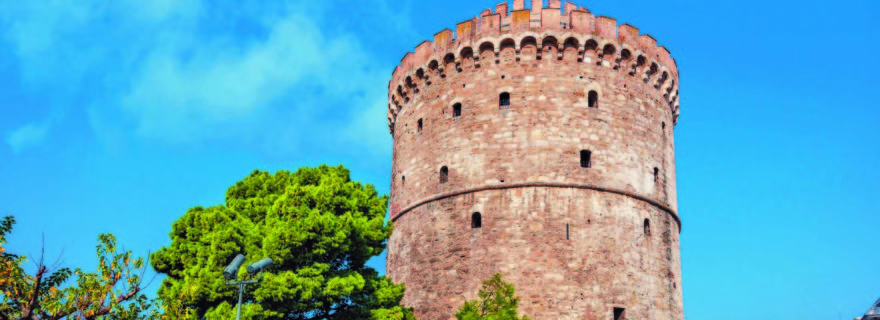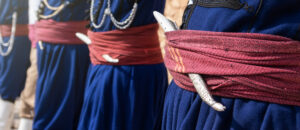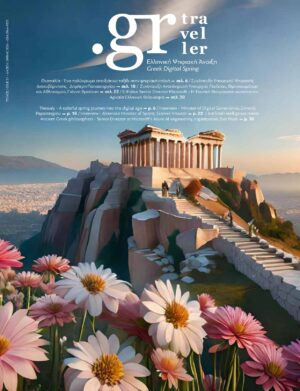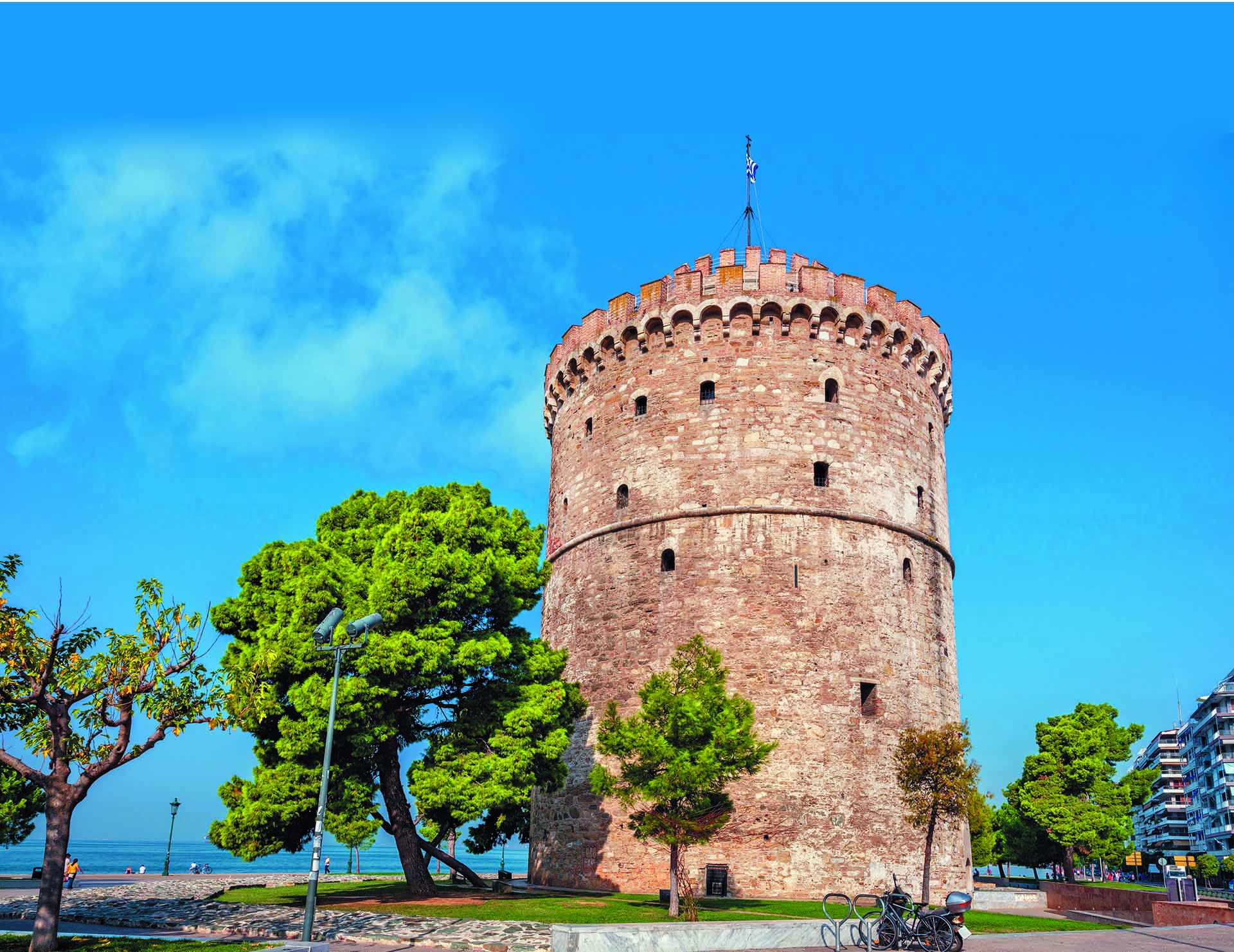
It will enchant you with its beauty, it will guide you through ancient, Byzantine and modern civilizations, it will fascinate you with its sounds and melodies whose history is lost in the depths of centuries, it will seduce you with the musky smells of spices and sesame cookies and it will seduce you in its unique taste paths.
Get ready for a walk in the beautiful and songful Thessaloniki that will stimulate all five senses, and this autumn you have many reasons to visit…

A “crossroads” of ancient and modern civilizations, Thessaloniki has a long history and countless monuments to testify to what has happened. Most of them are already known: the White Tower, Aristotelous Square, the Arch of Galerius – also known as the “arch”. Even if you have visited them in the past, this autumn is a chance to see some of them come to life with sounds, music and theatrical events, as part of the “Dimitria” festival.
From the end of September to mid-October, the stories of the White Tower “unfold” on land and sea, baroque music “fills” the Rotunda with its sounds, at the Yeni Mosque
“revive” the musical tradition of the Sephardic Jews of Thessaloniki, a two-day concert, storytelling and stand up comedy at the traditional market “Kapani” and a
theatrical event at the Folklore and Ethnological Museum. Heading towards the Upper Town, the style changes. The large buildings give way to the traditional mansions, the
picturesque alleys and UNESCO monuments, with the less famous Byzantine Baths and the more “famous” Vlatadon Monastery with its amazing panoramic view of the
“nymph of Thermaikos”.
At the highest point of the city you will see its walls, the Eptapyrgio or Yenti Koule and the Trigonio Tower, where you can enjoy the sunset.
INFO: The cultural route of the Thessaloniki Urban Transport Organization (OASΘ) since 2009 has been running a 50-minute tour with stops at the numerous historical monuments of the city. This is line No. 50, which starts approximately every hour from the White Tower with a ticket costing 2 euros.

The multicultural character of the city and its long history is also reflected in its musical tradition. Sounds and melodies from Greece, the Balkans, North Africa,
the East, from the Greek refugees of Asia Minor and the persecuted Spanish Jews, who found a second home in Thessaloniki, enriched its musical repertoire,
while during the Byzantine period cantors and hymn writers gave the city unique ecclesiastical hymns and troparia, which today constitute an important part of its great religious tradition.
The musical history of the city begins with the ancient “Pythia” and continues with the Byzantine “Dimitria” and the sounds of rebetiko, which flourished thanks to the refugees of Smyrna. The fruit of this relationship is the 300 or so rebetika songs that have been written for Thessaloniki. Today, the city’s musical heritage is continued by the Thessaloniki State Orchestra, the Department of Music Studies of the Aristotle University of Thessaloniki, its public, municipal and private Conservatories, the Thessaloniki Music School, orchestras, philharmonic orchestras, choirs of institutions, cultural associations, etc. and its jewel, the Thessaloniki Concert Hall. Its musical diversity is also evident in its nightly entertainment. Choose Ladadika, Paralia, Aristotelous Square, Ano Poli for traditional or contemporary, classical or alternative scene, rebetiko or art. Thessaloniki has it all.
INFO: Thessaloniki is the birthplace and “cradle” of many musical artists. In 1890 Emilios Riadis was born, one of the most important representatives of the Greek National School of Music, who taught at the State Conservatory of Thessaloniki, founded in 1914. Vassilis Tsitsanis, one of the greatest creators of rebetiko and folk singing, lived in the city during the period of German occupation. Among the most contemporary, Dionysis Savvopoulos, Marinella, Nikos Papazoglou, Thodoris Marantinis of Onirama and many others were born in Thessaloniki. Socrates Malamas, Antonis Remos, Despina Vandi, Trypes and Xylina Swords all started their careers from Thessaloniki.

Our sense of smell is directly linked to our memory, scientists say, which explains why the smells of Thessaloniki create memories that are forever etched in our minds.
Smells brought mainly from the sea, the herbs and spices brought to the cuisine of Thessaloniki by the refugees from Asia Minor, as well as the incense and candles in the numerous Byzantine churches you will find, the most important being the church of Agios Dimitrios of Myrrh.
The smell of roasted sesame embracing the Thessaloniki bun is one of the first you will encounter in the city and is a real temptation. Passing by Aristotelous Square, the characteristic smell of the mahlepi, with which the brioches are made, will follow you throughout your tour of the centre. In the market and in Ano Poli, you will be overwhelmed by the smells of fish and seafood cooked in the traditional ouzeri, while wherever you are, your nostrils will be filled with the smell of freshly baked bread and sweet bougatsa from the many bakeries of the city.

Walk to the traditional market “Kapani”, where the smell of all kinds of spices that flavour the delicious dishes of the city will bring back memories of the “polite cuisine”.
INFO: The pretzel, a trademark of Thessaloniki, which wakes up the whole city with the smell of its beneficial sesame, dates back to Byzantine times. The word kulouri comes from the Byzantine word “kollikion”, which is mentioned in many Byzantine texts. Reports on its production and distribution appear mainly in Constantinople and the
Thessaloniki.

So many flavours, so many delicacies, a temptation and a challenge at the same time. The cuisine of Thessaloniki, influenced by Asia Minor, is famous for its deliciousness, its variety and the combination of traditional flavours with modern variations. Fresh local produce, buffalo milk and meat, fish and seafood, herbs and spices create the ultimate culinary experience.
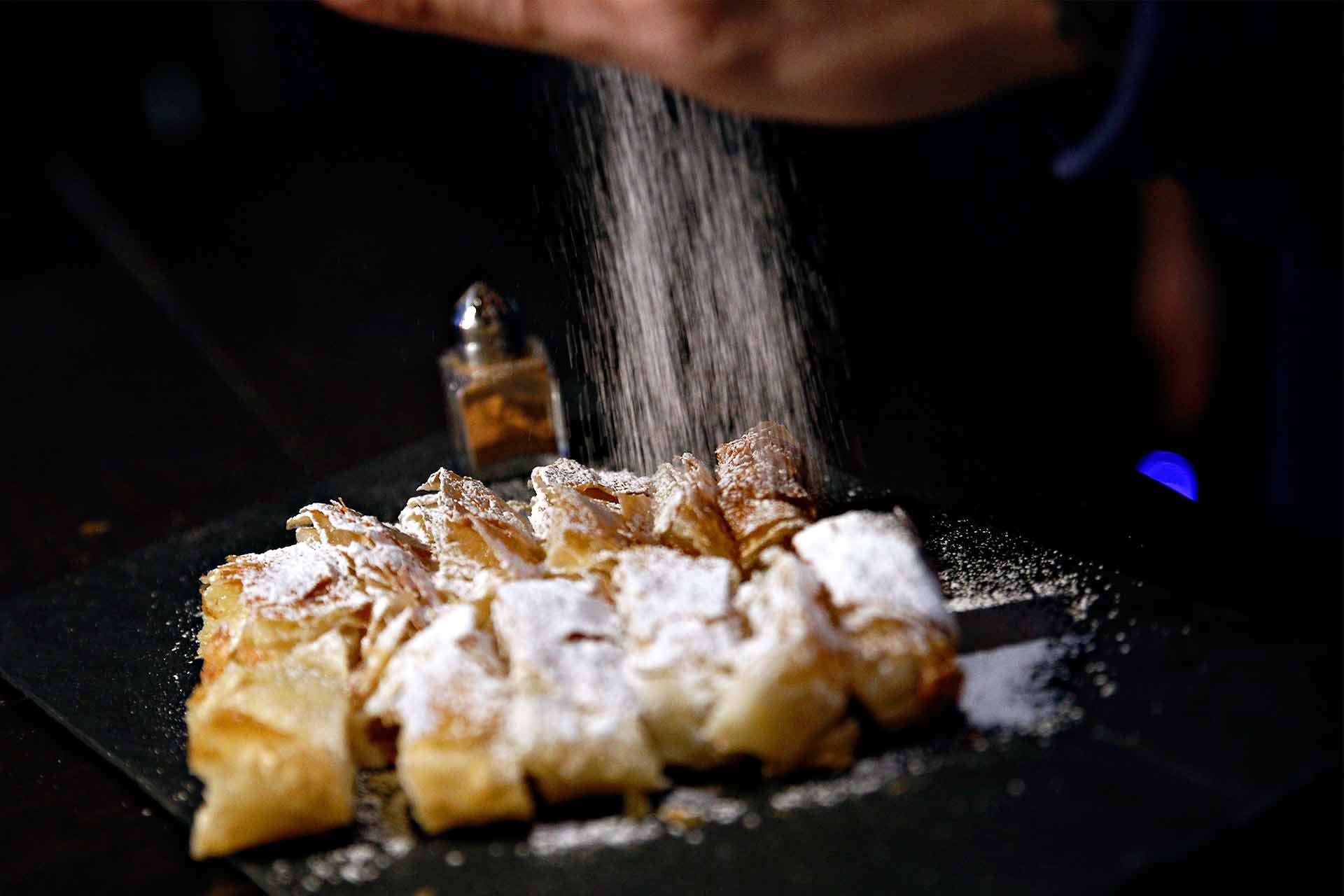
Start your breakfast with your favorite bagel, boulangerie with cream, cheese, minced meat or spinach, doughnuts with honey and cinnamon and fragrant brioche. For lunch, choose fresh fish and seafood dishes in Ano Poli, otherwise there are many ouzeri and places to eat in Ladadika, Aristotelous Square and elsewhere. Don’t go
straight to the main course if you don’t try the special appetizers, such as bouillanthi – grilled cheese with tomato, pepper and chili and pies with pontian perek leaf.
For dessert, the variety is equally wide: triangles of panarama, kazan dipping with buffalo milk as well as Isli, a traditional Asia Minor dessert with walnuts and herbs and the traditional ice cream dontourmas, a taste that is revived by the many modern ice cream shops in the city. The late-night guests can expect a pachas with garlic stubby and chili, with a tradition of about sixty years. In the past, there were many patsatsatsidika in Thessaloniki, mainly along the Egnatia road, while today there are very few left.
INFO: Bougatsa is the name of the dough with which this well-known and beloved dish is made and is served with various fillings: cream and chocolate in the sweet version, cheese, minced meat, spinach in the savory version. The recipe was brought with them by the Greek refugees from Asia Minor and spread mainly in Thessaloniki and Serres.

Autumn in Thessaloniki is rich in events and festivals. The Thessaloniki International Fair in September, the Dimitria Festival until mid-October, the
Film Festival and the Philoxenia tourist exhibition in November. If you are staying more days in Thessaloniki, it is worth organising your excursions to the surrounding areas.
Excursions to the nearby wineries of Epanomi and Vertiskos. See the cultivation and care of the grapes that in September is in its prime and taste some of the award-winning wines of Northern Greece. Religious excursions to the places visited and preached by the Apostle Paul, carrying the word of God,
in Thessaloniki, in Philippi, in Veroia. Historical excursions to Aegis (Vergina), the ancient capital of Macedonia and further south to the Cave of Petralona
in Halkidiki, with prehistoric findings. Explore its glorious history, from the Macedonian, Balkan and World Wars, in its war museums and military cemeteries. If you are a nature lover then the hydrobiotopes of Angelochori, Axios Delta and Aliakmonas are ideal for bird watching. In Lake Kerkini, apart from rare birds, you will find water buffalos, quiet villages and lakeside forests.
INFO: In the area of Thessaloniki there are military cemeteries of allied forces during the First and Second World War. In western Thessaloniki, the largest necropolis in the Balkans, Zeitenlik, is located, with twenty thousand or more lifeless bodies of the bodies of the Allied troops of the Entente. Also, in Dendropotamos is the only Indian Cemetery of the British Commonwealth in Greece, with Indian soldiers who fought with the British troops on the Macedonian front in the First World War.

Fountains of Thessaloniki’s Upper Town – Small buildings, architectural masterpieces
The Upper City of Thessaloniki is undoubtedly an area that “smells” of history. It was lucky, since it was saved from the catastrophic fire of 1917, but also because its layout has not been altered, resembling a labyrinth. We are always enchanted by a stroll through its alleys, especially if we discover a series of (nine) fountains (fountains) preserved from the Turkish occupation. The Turks attached great importance to water, as according to the Qur’an, it was considered a godly act to build a fountain.
to quench the pedestrian’s thirst. Bais even made sure to write his name on the marble slab so that Allah would not forget him. The fountains may originally have been formed
from a hollow dug in the stone, but later they evolved into magnificent monuments. The choice of the point had to do with the underground pipelines that crossed the Upper City from the aqueducts. The building was usually self-contained, rectangular in shape and the outer covering of the roof was flat or pitched. Their facade was decorated several times
and with floral motifs, cornices and doors, while the trough (tub) for water collection was made of marble or stone, materials from second use. The fountains of the Upper City are
listed monuments that need our care. Let’s give them a visit, they will take us on a journey through our modern history. On Olympiad Street. A description of the
1591 mentions that as in every district there was a mosque, in every street there was a fountain.
Stella N. Psyla
Architectural Engineer, Aristotle University of Thessaloniki.








